JULIUS EASTMAN: A POWER GREATER THAN
Julius Eastman: A Power Greater Than
New York Premiere
June 28, 7:30 pm
Wu Tsai Theater, David Geffen Hall
130 minutes, including 25-minute intermission
Composer Julius Eastman
Curator and Artistic Advisor Seth Parker Woods
Sound Design Christopher Botta
Lighting Design Thomas Dunn
Trumpet (1970), Julius Eastman
Nate Wooley, Robby Garrison, Jatin Himatsinghani, Brian Olson, Aidan Peterson, Megan Radcliffe, and Rebecca Steinberg, trumpets
Touch Him When (1970), Julius Eastman
JIJI, guitar
Hail Mary (1984), Julius Eastman
Davóne Tines*, voice
Miranda Cuckson* and Lina Bahn, violin
Coleman Itzkoff and Seth Parker Woods, cello
Doug Balliett*, bass
Adam Tendler, piano
Piano 2
richard valitutto, piano
Intermission
That Boy (1973/1974), Julius Eastman
transcribed and arranged by Seth Parker Woods
Isabel Lepanto Gleicher, flute
Sidney Hopson, percussion
Jodie Landau, voice
Adam Tendler, piano
Gay Guerilla (1979), Julius Eastman
Catherine Brookman, Julia Bullock*, and Davóne Tines*, voice
Miranda Cuckson* and Lina Bahn, violin
JIJI, guitar
Coleman Itzkoff*, Ernest Carbajal, Seth Parker Woods, cellos
Doug Balliett*, bass
Isabel Lepanto Gleicher, flute
Nate Wooley, trumpet
Chris Rountree, trombone
Erin Rogers and Shelley Washington, saxophone
Conor Hanick*, Joseph Kubera, richard valitutto, Adam Tendler, pianos
Jonny Allen* and Sidney Hopson, percussion
* AMOC* Company Member
THE ANNUNCIATION
THE ANNUNCIATION
Rosario Castellanos (Mexico, 1925 – 1974)
from The Sterile Virgin (1950)
Because since the beginning you were destined to be mine.
Before the ages of wheat and of the lark
and even before the fishes.
When God had nothing more than horizons
of unlimited blue and the universe
was a will not yet pronounced.
When everything lay in the divine lap,
intermingled and confused,
you and I lay there, complete, together.
Because since the beginning you were destined to be mine.
And here, you announce yourself.
Among contradictory angels you approach,
pouring yourself like a soft music,
like a glass of aromas and balsams.
You exalt my humility,
Your gaze, benevolent,
Transforms my wounds into ardent splendors.
And now, you approach
And you find me surrounded by prayers
Like high leaping flames.
LA ANUNCIACIÓN (extracto)
Rosario Castellanos (México, 1925 – 1974)
de De la vigilia estéril (1950)
Porque desde el principio me estabas destinado.
Antes de las edades del trigo y de la alondra
y aun antes de los peces.
Cuando Dios no tenía más que horizontes
de ilimitado azul y el universo
era una voluntad no pronunciada.
Cuando todo yacía en el regazo
divino, entremezclado y confundido,
yacíamos tú y yo totales, juntos.
Porque desde el principio me estabas destinado…
He aquí que te anuncias.
Entra contradictorios ángeles te aproximas,
como una suave música te viertes,
como un vaso de aromas y de bálsamos.
Por humilde me exaltas,
Tu mirada, benévola,
Transforma mis llagas en ardientes esplendores.
He aquí que te acercas
Y me encuentras rodeada de plegarias
Como de hogueras altas.
SE HABLA DE GABRIEL
1. SE HABLA DE GABRIEL *
Rosario Castellanos (México, 1925 – 1974)
Como todos los huéspedes
mi hijo me estorba ocupando un lugar que era mi lugar
existiendo a deshonra,
haciéndome partir en dos cada bocado.
Fea, enferma, aburrida,
lo sentía crecer a mis expensas,
robarle su color a mi sangre,
añadir un peso y un volumen clandestinos
a mi modo de estar sobre la tierra.
Su cuerpo me pidió nacer, cederle el paso;
darle un sitio en el mundo,
la provisión de tiempo necesaria a su historia.
El paso, el paso.
Consentí.
Y por la herida en que partió,
por esa hemorragia de su desprendimiento
se fue también lo último que tuve de soledad,
de yo mirando trás de un vidrio.
Quede abierta, ofrecida
a las visitaciones, al viento
Quedé abierta a la presencia.
* El hijo del poeta Castellano, Gabriel, nació en 1961.
Apocryphal Gospel of James
(coda of GABRIEL WAS SPOKEN OF)
Now I, Joseph, was walking about
and I looked up and saw the heaven standing still,
and I observed in amazement,
and the birds of heaven at rest.
I looked down at the earth
and I saw a vessel lying there,
and workmen reclining,
and their hands were in the vessel.
Those who were chewing did not chew.
Those who were lifting did not lift up,
and those who were carrying to their mouths
did not carry, but all faces were looking upward.
I saw sheep standing still,
and the shepherd raised his hand to strike them,
but his arm remained up.
I observed the streaming river,
and I saw the mouths of the kids and the water,
but they were not drinking.
The winds stopped; they made no sound:
there was no motion of tree leaves.
The streams did not flow;
there was no motion of the sea.
The maiden stood looking intently into heaven.
1. TALK OF GABRIEL *
Rosario Castellanos (Mexico, 1925 – 1974)
Like all my guests my son impeded me,
occupying a place that was my place,
existing at inopportune times,
making me divide each bite in two.
Ugly, sick, bored,
I felt him grow at my expense,
steal the color from my blood,
add clandestine weight and volume
to my way of being on the earth.
His body asked to be born, to yield to his passing,
to give him his place in the world
the provision of time necessary for his history.
I consented.
And through the wound of his departure,
through the hemorrhage of his detachment,
also went the last of my solitude,
looking alone behind a glass.
I remained open, offered
to the visitations, to the wind,
to presence.
* Poet Castellano’s son, Gabriel, was born 1961
Evangelio apócrifo de Jacobo
(coda de SE HABLA DE GABRIEL)
Ahora yo, José, caminaba,
y miré hacia arriba y ví detenido el Cielo,
y observé en asombro,
y las aves del Cielo en descanso.
Y miré hacia abajo a la tierra
y ví allí una vasija,
y los obreros reclinaban,
y sus manos dentro de la vasija.
Aquellos que masticaban no masticaron.
Aquellos que levantaban no levantaron,
y aquellos que no comían
no comieron, pero todos miraban hacia arriba
Ví ovejas detenidos en su lugar,
y el pastor levantaba la mano para golpearlas,
pero su brazo permaneció en alto.
Y observé el río que fluye,
y ví las bocas de los corderos y el agua,
pero no bebían.
Y los vientos se detuvieron en silencio:
no había movimiento en las hojas de los árboles
Los arroyos no fluían;
no había movimiento en el mar.
La doncella se quedó mirando intensamente al Cielo.
MAGNIFICAT
2. MAGNIFICAT
King James Version (1604 – 1611)
Luke 1: 46-55
And Mary said,
My soul doth magnify the Lord,
and my spirit hath rejoiced in God my Saviour.
For he hath regard the low estate of his handmaiden:
for, behold, from henceforth,
all generations shall call me blessed.
For he that is mighty hath done to me great things;
and holy is his name.
And, his mercy is on them that fear him
from generation to generation.
For he hath shown his strength with his arm;
he hath scattered the proud
He hath put down the mighty from their seats,
and exalted them of low degree.
He hath filled the hungry with good things,
and the rich he hath sent empty away.
He hath helped his servant Israel
in remembrance of his mercy;
As he spake to our fathers, to Abraham,
and to his seed for ever.
2. MAGNIFICAT
Reina-Valera Versión
San Lucas 1: 46-55
Entonces María dijo:
Engrandece mi alma al Señor;
Y mi espíritu se alegró en Dios mi Salvador.
Porque ha mirado á la bajeza de su criada;
porque he aquí, desde ahora
me dirán bienaventurada todas las generaciones.
Porque me ha hecho grandes cosas el Poderoso;
y santo es su nombre.
Y su misericordia de generación á generación
á los que le temen.
Hizo valentía con su brazo:
esparció los soberbios
Quitó los poderosos de los tronos,
y levantó á los humildes.
A los hambrientos hinchió de bienes;
y á los ricos envió vacíos.
Recibió á Israel su siervo,
acordándose de la misericordia,
Como habló á nuestros padres á Abraham
y á su simiente para siempre.
SHAKE THE HEAVENS
3. SHAKE THE HEAVENS
King James Version (1604 – 1611)
Haggai 2: 6-7
For thus saith the Lord […] :
Yet once, it is a little while,
and I will shake the heavens
and the earth and the sea and the dry land.
And the desires of all the nations shall come.
And I will fill this house with glory.
And in this place, I will give peace.
They drew near to Bethlehem.
They were three miles distant,
and Joseph turned and saw Mary weeping
and he said
“Probably that which is in her is distressing her.”
Once again Joseph turned and saw her laughing,
and he said:
“Mary, how is it that I see your face at one moment laughing and at another time weary?”
She said to Joseph,
“It is because I see two peoples with my eyes,
the one weeping and mourning,
the other rejoicing and glad.”
3. SACUDE LOS CIELOS
Reina-Valera Version
Haggeo 2: 6-7
Porque así dice Dios […]:
De aquí á poco aun haré
yo temblar los cielos
y la tierra, y la mar y la seca.
Y vendrá el Deseado de todas las gentes.
y henchiré esta casa de gloria,
y daré paz en este lugar.
Evangelio apócrifo de Santiago
Se acercaron hacia Belén.
Estaban a tres millas de distancia,
y volteó José y vió a María llorar
y dijo
“Probablemente lo que hay en ella la está angustiando.”
Otra vez volteó José y la vió reir,
y dijo:
“María ¿cómo es que veo tu rostro unas veces
riendo y otras veces cansada?”
Le dijo a José,
“Es porque veo en mis ojos dos pueblos,
el que llora y se lamenta,
el otro regocijado y contento.”
PUES MI DIOS NACIDO A PENAR
4. PUES MI DIOS NACIDO A PENAR – VILLANCICO V *
(NAVIDAD, 1689, no. 287)
Sor Juana Inés de la Cruz (Mexico, 1648 – 1695)
Pues mi Dios ha nacido a penar,
déjenle velar.
Pues está desvelada por mi
déjenle dormir.
Déjenle velar,
que no hay pena, en quien ama,
como no penar.
Déjenle dormir,
que quien duerme, en el sueño
se ensaya a morir.
Silencio, que duerme.
Cuidado, que vela…
Déjenle velar.
Déjenle dormir.
4. BECAUSE MY LORD WAS BORN TO SUFFER
(CHRISTMAS, 1689, no. 287)
Sor Juana Inés de la Cruz (Mexico, 1648 – 1695)
Since my God was born to suffer,
let him stay awake.
Since he stays awake for me,
let him sleep.
Let him stay awake,
for there is no pain,
in one who loves as if there’s no suffering.
Let him sleep,
for one who sleeps,
while dreaming, rehearses death.
Silence, let him sleep.
Take care, let him stay awake…
Let him stay awake.
Let him sleep.
WHEN HEROD HEARD
5. WHEN HEROD HEARD
King James Version (1604 – 1611)
Matthew 2: 1-3, 7-8
Now when Jesus was born in Bethlehem of Judea
in the days of Herod the king, behold,
there came wise men from the east to Jerusalem, saying,
“Where is he that is born King of the Jews?
for we have seen his star in the East
and have come to worship him.”
Now when Herod the king had heard these things,
he was troubled […] and he privily called his wise men,
inquired of them diligently what time the star appeared.
And he sent them to Bethlehem, saying,
“Go and search diligently for the young child;
and when you have found him bring me word again
that I may come and worship him also.”
5. CUANDO HERODES ESCUCHÓ
Reina-Valera Version
San Mateo 2: 1-3, 7-8 (p. 2391)
Y como fué nacido Jesús en Bethlehem de Judea
en días del rey Herodes,
he aquí unos magos vinieron del oriente á Jerusalem, Diciendo:
¿Dónde está el Rey de los Judíos, que ha nacido?
porque su estrella hemos visto en el oriente,
y venimos a adorarle.
Y oyendo esto el rey Herodes,
se turbó,[…] y llamando en secreto á los magos,
entendió de ellos diligentemente el tiempo del aparecimiento de la estrella;
Y enviándolos á Bethlehem, dijo:
Andad allá, y preguntad con diligencia por el niño;
y después que le hallareis, hacédmelo saber,
para que yo también vaya y le adore.
AND THE STAR WENT BEFORE THEM
6. AND THE STAR WENT BEFORE THEM
King James Version (1604 – 1611)
Matthew 2: 9, 11
When they had heard the king, they departed;
and, lo, the star which they saw in the east,
went before them,
till it came and stood over where the young child was.
And when they were come into the house,
they saw the young child with Mary his mother,
and fell down and worshiped him:
and when they had opened their treasures,
they presented unto him gifts;
gold, frankincense, myrrh.
6. Y LA ESTRELLA IBA DELANTE DE ELLOS
Reina-Valera Version
Mateo 2: 9, 11 (p. 2392)
Y ellos, habiendo oído al rey, se fueron:
y he aquí la estrella que habían visto en el oriente,
iba delante de ellos,
hasta que llegando, se puso sobre donde estaba el niño.
Y entrando en la casa,
vieron al niño con su madre María,
y postrándose, le adoraron;
y abriendo sus tesoros, le ofrecieron dones,
oro é incienso y mirra.
THE THREE WISE KINGS ( LOS TRES REYES MAGOS)
7. THE THREE WISE KINGS*
Rubén Darío (Nicaragua, 1867 – 1916)
– I am Gaspar. I have brought frankincense.
and I have come here to say: that life is good.
That God exists. I have come here to say that love is
everything.
I know it is so because of the heavenly star!
– I am Melchior.
I have brought fragrant myrrh
Yes, God exists. He is the light of day.
The whitest flower is rooted in the mud.
And all delights are tinged with melancholy!
– I am Balthasar. I have brought gold. I assure you
God exists. He is great and strong.
Know it is so because of the perfect star
that shines so brightly in Death’s diadem.
– Gaspar, Melchior, Balthasar, be still.
Love has triumphed and bids you to its feast.
Christ reborn turns chaos into light,
and on his brow, He wears the crown of life!
*originally written in Spanish and translated into English for
this piece
7. LOS TRES REYES MAGOS
Rubén Darío (Nicaragua, 1867 – 1916)
– Yo soy Gaspar. Aquí traigo el incienso.
Vengo a decir: La vida es pura y bella.
Existe Dios. El amor es inmenso.
¡Todo lo sé por la divina Estrella!
– Yo soy Melchor.
La mirra aroma todo.
Existe Dios. Él es la luz del día.
La blanca flor tiene sus pies en lodo.
¡Y en el placer hay la melancolía!
– Soy Baltasar. Traigo el oro. Aseguro
que existe Dios. Él es el grande y fuerte.
Todo lo sé por el lucero puro
que brilla en la diadema de la Muerte.
– Gaspar, Melchor y Baltasar, callaos.
Triunfa el Amor, y a su fiesta os convida.
¡Cristo resurge, hace la luz del caos
y tiene la corona de la Vida!
AND WHEN THEY WERE DEPARTED
8. AND WHEN THEY WERE DEPARTED
King James Version (1604 – 1611)
Matthew 2: 13
And when they were departed,
behold, the angel of the Lord,
appeared to Joseph in a dream, saying,
“Arise and take the young child
and his mother and flee into Egypt,
and be thou there until I bring thee word:
for Herod will seek the young child to destroy him.”
8. Y CUANDO SE FUERON
Reina-Valera Version
San Mateo 2: 13 (p. 2392)
Y partidos ellos,
he aquí el ángel del Señor
aparece en sueños á José, diciendo:
Levántate, y toma al niño
y á su madre, y huye á Egipto,
y estáte allá hasta que yo te lo diga;
porque ha de acontecer, que Herodes buscará al niño para matarlo.
AND HE HATH SLEW ALL THE CHILDREN
9. AND HE HATH SLEW ALL THE CHILDREN
King James Version (1604 – 1611)
Matthew 2: 16
Then Herod, when he saw that he
was mocked [by] the wise men,
was exceeding wroth, and he sent forth,
and he slew all the children that were in Bethel.
9. Y MATÓ A TODOS LOS NIÑOS
Reina-Valera Versión
Mateo 2: 16 (p. 2392)
Herodes entonces, como se
vió burlado de los magos,
se enojó mucho, y envió,
y mató á todos los niños que había en Bethlehem.
MEMORIAL DE TLATELOLCO
10. MEMORIAL DE TLATELOLCO
Rosario Castellanos (México, 1925 – 1974)
La oscuridad engendra la violencia
y la violencia pide oscuridad
para cuajar el crimen.
Por eso el dos de octubre aguardó hasta la noche
para que nadie viera la mano que empuñaba
el arma, sino sólo su efecto de relámpago.
¿Y a esa luz, breve y lívida, quién? ¿Quién es el que
mata?
¿Quiénes los que agonizan, los que mueren?
¿Los que huyen sin zapatos?
¿Los que van a caer al pozo de una cárcel?
¿Los que se pudren en el hospital?
¿Los que se quedan mudos, para siempre, de espanto?
¿Quién? ¿Quiénes? Nadie. Al día siguiente, nadie.
La plaza amaneció barrida; los periódicos
dieron como noticia principal
el estado del tiempo.
Y en la televisión, en el radio, en el cine
no hubo ningún cambio de programa,
ningún anuncio intercalado ni un
minuto de silencio en el banquete.
(Pues prosiguió el banquete.)
No busques lo que no hay: huellas, cadáveres
que todo se le ha dado como ofrenda a una diosa,
a la Devoradora de Excrementos.
No hurgues en los archivos
pues nada consta en actas.
Ay, la violencia pide oscuridad
porque la oscuridad engendra sueño
y podemos dormir soñando que soñamos.
Mas he aquí que toco una llaga: es mi memoria.
Duele, luego es verdad. Sangra con sangre
y si la llamo mía traiciono a todos.
Recuerdo, recordamos.
Ésta es nuestra manera de ayudar a que amanezca
sobre tantas conciencias mancilladas,
sobre un texto iracundo sobre una reja abierta,
sobre el rostro amparado tras la máscara.
hasta que la justicia se siente entre nosotros.
10. IN MEMORY OF TLATELOLCO
Rosario Castellanos (Mexico, 1925 – 1974)
Darkness engenders violence
and violence demands darkness
to coagulate the crime.
That is why October the second waited until night
So that no one could see the hand that gripped
The weapon, but only its lightning flash effect.
And in that light, brief and pallid, who? Who is it
that kills? Who are those who agonize? those who die?
Those who flee without shoes?
Those who run to fall into the pit of a prison?
Those who rot in the hospital?
Those who remain mute, forever, with terror?
Who? Who? No one. On the following day, no one.
Dawn broke on the plaza cleanly swept **;
the newspapers reported as the main news
the state of the weather.
And on the television, on the radio, in the cinema
there was no change of program,
no interrupting news bulletin, nor even one
minute of silence at the banquet.
(Thus the banquet proceeded.)
Don’t search for that which is not there: traces, corpses
for all has been given as offering to a goddess,
to the Devourer of Excrements. +
Do not rummage through the archives
for nothing has been recorded.
Oh, violence calls for violence
because darkness breeds sleep
and we can sleep dreaming that we sleep.
But behold, I touch a wound: it is my memory,
It hurts, then it is true. Bleed with blood
and if I call it mine, I betray everyone.
I remember, we remember.
It is our way of awakening
amidst so many tainted consciences,
amidst an angry text, amidst an open gate,
amidst a face concealed behind a mask.
until justice is felt by us all.
* written after the military and police massacred students
and
civilians protesting the government in the Plaza de las
Tres Culturas on October 2, 1968, in the Tlatelolco
section of Mexico City.
** literal translation: “the plaza day-break sweep”;
“barrida” can be translated as: to sweep clean;
a political sweep; or a slaughter
+ refers to the goddess Tlazoltéotl, the Devourer of
Excrement
PUES ESTÁ TIRITANDO
11. PUES ESTÁ TIRITANDO
King James Version (1604 – 1611)
Isaiah 30: 25, 26
IN THE DAYS OF THE GREAT SLAUGHTER
In the days of the great slaughter, when the towers fall,
the light of the moon shall be the light of the sun,
and the light of the sun shall be sevenfold,
as the light of seven days […]
And there shall be upon ev’ry high mountain
and upon ev’ry high hill, rivers and streams of waters.
Sor Juana Inés de la Cruz (México, 1648 – 1695)
POR CELEBRAR DEL INFANTE – VILLANCICO I *
(NAVIDAD, 1689, no. 283)
1––Pues está tiritando
Amor en el hielo,
y la escarcha y la nieve
me lo tienen preso,
¿quién le acude?
2––¡El Agua!
3––¡La Tierra!
4––¡El Aire!
1––¡No, sino el Fuego!
Pues el Niño fatigan
sus penas y males,
y a sus ansias no dudo
que alientos le faltan,
¿quién le acude?
2––¡El Fuego!
3––¡La Tierra!
4––¡El Agua!
1––¡No, sino el Aire!
Pues el Niño amoroso
tan tierno se abrasa
que respira en Volcanes
diluvios de llamas,
¿quién le acude?
2––¡El Aire!
3––¡El Fuego!
4––¡La Tierra!
1––¡No, sino el agua!
Si por la tierra el Niño
los Cielos hoy deja,
y no halla en qué descanse
su Cabeza en ella,
¿quién le acude?
2––¡El Agua!
3––¡El Fuego!
4––¡El Aire!
1––¡No, mas la Tierra!
11. FOR HE IS SHIVERING
Reina-Valera Version
Isaías 30: 25, 26
EL DÍA DE LA GRAN MATANZA
En el día de la gran matanza, cuando caerán las torres,
la luz de la luna será como la luz del sol,
y la luz del sol siete veces mayor,
como la luz de siete días,
Y sobre todo monte alto,
y sobre todo collado subido, habrá ríos y corrientes de aguas
Sor Juana Inés de la Cruz (Mexico, 1648 – 1695)
TO CELEBRATE THE INFANT
(CHRISTMAS, 1689, no. 283)
1––Since Love is shivering
on the ice, and the frost and the snow
have imprisoned him from me,
Who attends to him?
2––The Water!
3––The Earth!
4––The Air!
1–– No, but the Fire will!
Since the Child becomes exhausted
with pains and ills,
and his anxieties no doubt
leave him breathless
Who attends to him?
2––The Fire!
3––The Earth!
4––The Water!
1––No, but the Air will!
Since the loving, tender Child,
burns himself
as he breathes floods of flames
like in Volcanoes,
Who attends to him?
2––The Air!
3––The Fire!
4––The Earth!
1––No, but the Water will!
Since the Child today
leaves the heavens for the earth,
and can find here
some place to rest his head,
Who attends to him?
2––The Water!
3––The Fire!
4––The Air!
1––No, but the Earth will!
* villancico was a common poetic and musical form of
Latin America, popular from the late 15th to 18th centuries.
With the decline in popularity of the villancicos in the 20th
century, the term became reduced to mean merely
Christmas carol.
A PALM TREE
12. A PALM TREE
Two works interwoven
I. Apocrypha of the New Testament
Gospel of Pseudo-Matthew 20
And so it happened
that on the third day after their departure
Mary was fatigued by the heat of the sun in the dessert
And seeing a palm tree said to Joseph
“I want to rest a bit under its shadow.”
Joseph quickly led her to the palm
and let her get down from the animal
While Mary sat,
she looked up at the top of the palm
and saw it full of fruit.
She said to Joseph,
“I wish I might have some fruit from this tree.”
Joseph said to her,
“I am astonished that you say this,
when you see how high this palm tree is.
You think to eat from the fruit of the palm,
but it is not possible.
I think more of the lack of water,
which already fails us.
We now have nothing by which we can refresh ourselves
and the animal.”
Then, the infant Jesus,
who was resting with smiling face
on his mother’s lap,
said to the palm tree
“Bend down tree and refresh my mother with your fruit.”
And at this voice
the palm bent down its head to the feet of Mary,
and they gathered its fruit,
and all were refreshed.
Then Jesus said to it,
“Rise up, palm, and be strong,
be a companion of my trees
which are in my Father’s Paradise.
Open a water course beneath your roots
which is hidden in the Earth,
and from it let flow waters to satisfy us.”
And the palm raised itself at once,
and fountains of water,
very clear and cold and sweet,
began to pour out through the roots.
II. Rosario Castellanos (México, 1925 – 1974)
de El rescate del mundo (1952)
UNA PALMERA
(interpola en A PALM TREE)
Señora de los vientos,
garza de la llanura
cuando te meces canta
tu cintura.
Gesto de la oración
o preludio del vuelo,
en tu copa se vierten uno a uno
los cielos.
Desde el país oscuro de los hombres
he venido, a mirarte, de rodillas.
Alta, desnuda, única.
Poesía.
12. UNA PALMERA
Dos textos entrelazados
I. Apócrifa del Nuevo Testamento
Evangelio del pseudo-Mateo 20
Y así sucedió
que en el tercer día después de su partida
María estaba cansada por el calor del sol en el desierto
Y al ver una palmera le dijo a José
“Quiero descansar un poco debajo de su sombra.”
Rápidamente José la llevó hacia la palmera
y la bajó del animal
Mientras María se sentaba
miró hacia arriba a la palmera
y vió su fruta
Le dijo a José,
“Quisiera comer alguna fruta de este árbol.”
José le dijo,
“Me asombro a que me lo digas,
cuando veas qué tan alta está la palmera.
Piensas comer la fruta de la palmera,
pero esto no es posible.
Pienso más en la falta de agua,
que aun nos falla.
Ahora no temenos nada para refrescarnos y el animal
Y luego el niño Jesús,
quien descansaba con su rostro sonriente
en el regazo de su madre,
le dijo a la palmera
“Inclínate árbol y refresca a mi madre con tu fruto.”
Y al escuchar su voz
la palmera se inclinó a los pies de María,
y recogieron su fruta,
y todos se refrescaron.
Luego Jesús le dijo
“Levántate, palmera, y se fuerte,
se una compañera de mis árboles
que están en el Paraíso de mi Padre.
Abre un curso de agua debajo de tus raíces
escondidas en la Tierra,
y deja que fluyan las aguas para satisfacernos.”
Y la palmera se alzó en seguida,
y las fuentes de agua,
muy claras y frías y dulces,
comenzaron a brotar por todas las raíces.
Rosario Castellanos (Mexico, 1925 – 1974)
from The rescue of the world (1952)
A PALM
Lady of the winds,
heron of the plain
when you sway,
your waist sings.
Gesture of prayer
or prelude to the flight of wings,
into your cup are poured the heavens
one by one.
From the dark land of men
I have come, to look at you, kneeling.
Tall, naked, unique.
Poetry.
Company
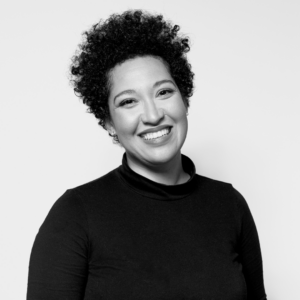
JULIA BULLOCK
Grammy-winning American classical singer Julia Bullock combines versatile artistry with a probing intellect and commanding stage presence. As well as headlining productions and concerts at preeminent arts institutions around the world, she has held positions as Featured Artist of London’s Philharmonia Orchestra and Artist-in-Residence of New York’s Metropolitan Museum of Art, London’s Guildhall School of Music and Drama, and the San Francisco Symphony. A prominent voice of social consciousness and activism, she was named a 2021 Artist of the Year and “agent of change” by Musical America.
Bullock’s operatic career spans repertoire from the Baroque canon to contemporary works written expressly for her voice. This season, she makes title role appearances in both Handel’s Theodora at the Teatro Real Madrid and John Adams’s Antony and Cleopatra, a work composed with her in mind, at the Metropolitan Opera, where she recently made her house debut in his El Niño. She has previously created important new roles in Terence Blanchard’s Fire Shut Up in My Bones, Michel van der Aa’s Upload, and Adams’s Girls of the Golden West. In concert, she has performed with ensembles including the Los Angeles and New York Philharmonics; the Baltimore, Boston, London, NHK, and San Francisco Symphonies; the Deutsches Symphonie-Orchester Berlin; and London’s Philharmonia Orchestra and Orchestra of the Age of Enlightenment, with which she gives a transatlantic tour this season. Past solo highlights include tours with the American Modern Opera Company, of which she is a founding core member; the American, British, Belgian, and Russian premieres of Zauberland; and recitals at New York’s Carnegie Hall, Los Angeles’s Disney Hall, Philadelphia’ s Kimmel Center, Boston’s Celebrity Series, Washington’s Kennedy Center, and London’s Wigmore Hall.
Bullock has developed and launched three signature projects, all flourishing nationally and beyond. Her multimedia ensemble program “History’s Persistent Voice” addresses the transatlantic slave trade through songs by people enslaved in the U.S. and through visual art, poetry, and new music by B/black female composers. Devised with her husband, Christian Reif, El Niño: Nativity Reconsidered is a chamber orchestral arrangement of El Niño that amplifies the voices of women and Latin American poets. Perle Noire: Meditations for Joséphine, created with Tyshawn Sorey, Claudia Rankine, Michael Schumacher, and Peter Sellars, reexamines the life and legacy of Joséphine Baker. Recorded with Reif and the Philharmonia Orchestra for Nonesuch, Bullock’s solo album debut, Walking in the Dark, won the 2024 Grammy Award for Best Classical Solo Vocal, as well as Opus Klassik and Edison Klassiek awards. Her discography also includes Grammy-nominated recordings of Doctor Atomic and West Side Story, while other honors include the Sphinx Medal of Excellence, Lincoln Center’s Martin E. Segal Award, and First Prize at the Naumburg International Vocal Competition.
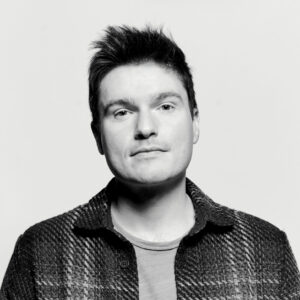
JONNY ALLEN
Jonny Allen is a Grammy-nominated percussionist whose contagious passion for music has been described as “a demonstration of raw power, virtuosity and feeling” by The New York Times. Jonny has won prizes at both the International Chamber Music Competition and the International Marimba Competition in Salzburg, giving respective performances at Carnegie Hall and Schloss Hoch in Flachau, Austria. He has also performed as a drum set soloist with Ghana’s National Symphony Orchestra at the National Theatre in Accra. Jonny performs regularly with his percussion quartet, Sandbox, and is a founding Core Member of the American Modern Opera Company (AMOC). He is also a committed educator on percussion faculty at the University of Missouri-Kansas City, The New School in Manhattan, and the Peabody Institute in Baltimore. Jonny holds a Bachelor’s degree and Performer’s Certificate from the Eastman School of Music, as well as a Masters degree and Artist Diploma from the Yale School of Music.

DOUG BALLIETT
Doug Balliett is a composer, instrumentalist, and poet based in New York City. The New York Times described his compositions as “brainily bubble gum and lovable shaggy,” his poetry as “brilliant and witty,” and his bass playing as “elegant.” Doug is a professor of baroque bass and violone at The Juilliard School, and he leads the Theotokos ensemble every Sunday at St. Mary’s Church. He plays regularly with Les Arts Florissants, Jupiter Ensemble, ACRONYM, Ruckus, BEMF, Alarm Will Sound, and other ensembles. In 2021, five of his Ovid Cantatas were filmed for Qwest TV with William Christie, Lea Desandre, and Nick Scott.
For three years he and his twin brother hosted a weekly show dedicated to living composers on WQXR’s new music channel Q2. Upcoming performances of his work include Beast Fights at Tanglewood with the Boston Symphony bass section, and the annual New Year’s Eve performance of his opera Gawain and the Green Knight.
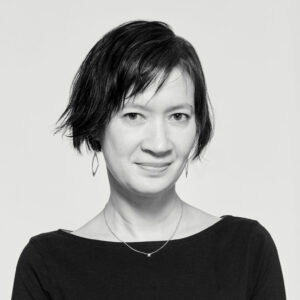
MIRANDA CUCKSON
A highly-acclaimed soloist and collaborator, violinist/violist Miranda Cuckson delights audiences with her performances of music ranging from older eras to the most current creations. She performs at venues ranging from Suntory Hall to the Berlin Philharmonie to the Teatro Colón and Cleveland Museum, the St. Paul Chamber Orchestra’s Liquid Music, and the Ojai, Wien Modern, Grafenegg, Time Spans, Marlboro, Bard, West Cork, Portland, LeGuessWho, and SinusTon festivals. Miranda made her Carnegie Hall debut playing Piston’s Violin Concerto No. 1 with the American Symphony Orchestra, and just recently made her debut at the Vienna Musiverein with the Haas Violin Concerto No. 2.
She has released ten lauded albums, including Nono’s La lontananza nostalgica utopica futura, named a Best Recording of the Year by the New York Times. Miranda is a member of AMOC* and founder/director of Nunc. She studied at Juilliard and teaches at Mannes School of Music.

CONOR HANICK
Conor Hanick is regarded as one of his generation’s most inquisitive interpreters of music both new and old, whose “technical refinement, color, crispness, and wondrous variety of articulation benefit works by any master” (The New York Times). Hanick’s playing, “a revelation of clarity and bite,” recalled to the Times’ Anthony Tommasini a “young Peter Serkin,” and his performance of John Cage’s Sonatas and Interludes was, according to Times’ critic David Allan, “the best instrumental concert I have seen all year,” praise echoed by The Boston Globe, which named the performance the “Best Solo Recital” of Hanick has recently performed with the San Francisco Symphony, Seattle Symphony, Alabama Symphony, Orchestra Iowa, and the Boston Modern Orchestra Project, and has been presented by the Gilmore Festival, New York Philharmonic, Elbphilharmonie, De Singel, Centre Pompidou, Caramoor, Cal Performances, Philadelphia Chamber Music Society, Park Avenue Armory, and the Ojai Festival, where in 2022 with AMOC* (American Modern Opera Company) he served as the festival’s artistic director.
A fierce advocate for the music of today, and “the soloist of choice for such thorny works” (The New York Times), Hanick has premiered over 200 pieces and collaborated with composers both emerging and iconic, among them Pierre Boulez, Kaija Saariaho, Steve Reich, Tania León, and Charles Wuorinen, in addition to the leading composers of his generation, including Nico Muhly, Caroline Shaw, Tyshawn Sorey, Christopher Cerrone, Anthony Cheung, and Samuel Carl Adams, whose piano concerto, No Such Spring, he premiered in 2023 with Esa-Pekka Salonen and the San Francisco Symphony. Since 2014, Hanick has been a faculty artist at the Music Academy of the West and in 2018 became its director of Solo Piano. He is a member of the keyboard and chamber music faculty of The Juilliard School, Mannes College, and the CUNY Graduate Center.
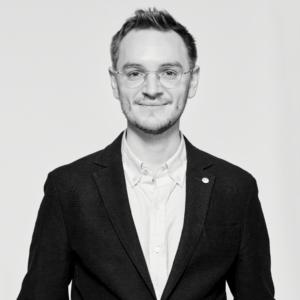
COLEMAN ITZKOFF
Cellist and performer Coleman Itzkoff stands at the intersection of baroque/classical/new music, contemporary dance, and experimental theater. Whether premiering works by living composers and performing baroque music on historical instruments in the same concert, delivering enigmatic monologues in a piece of avant-garde dance theater, composing, arranging, and recording music for the Amazon film Le Bal des Folles, or simply playing solo Bach for hospital patients in the time of COVID, Coleman continues to push the boundaries of what it means to be a musician of the 21st century.
As a soloist, he has been featured soloist with many great orchestras, including recent appearances with the Houston, San Diego, and Cincinnati Symphonies. He is a dedicated member of the early music ensembles Ruckus and Twelfth Night, and is a founding member of AMOC. Coleman holds a Bachelors in Music from Rice University, a Masters in Music from USC, and an Artist Diploma from The Juilliard School.
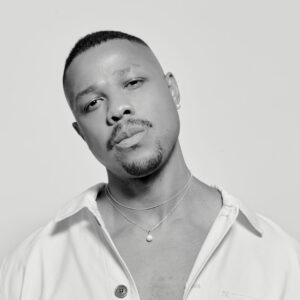
DAVÓNE TINES
Heralded as a “singer of immense power and fervor” and “[one] of the most powerful voices of our time” by The Los Angeles Times, the “immensely gifted American bass-baritone Davóne Tines has won acclaim, and advanced the field of classical music” (The New York Times) through his work that blends opera, art song, contemporary classical, spirituals, gospel, and songs of protest, as a means to tell a deeply personal story of perseverance that connects to all of humanity. Called a “next generation leader” by Time Magazine and recently named Musical America’s 2022 Vocalist of the Year, Mr. Tines is a path-breaking artist at the intersection of many histories, cultures, and aesthetics.
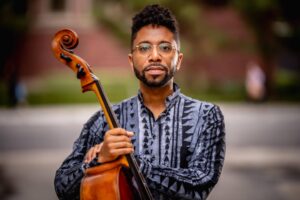
SETH PARKER WOODS
Hailed by The Guardian as “a cellist of power and grace” who possesses “mature artistry and willingness to go to the brink,” three-time GRAMMY®-nominated cellist Seth Parker Woods has established his reputation as a versatile artist and innovator across multiple genres. As The New York Times wrote, “Woods is an artist rooted in classical music, but whose cello is a vehicle that takes him, and his concertgoers, on wide-ranging journeys.” Also at the forefront of fashion, Woods has topped “Best Dressed” lists in Variety, Women’s Wear Daily, Texas Monthly, and OC Register. Woods has served on the faculty of Thornton School of Music at The University of Southern California since 2022 and was appointed to the Robert Mann Chair in Strings and Chamber Music in 2024. He received the 2022 Chamber Music America Michael Jaffee Visionary Award.
In the 2024-2025 season, Woods debuted with the New York Philharmonic in a new concerto by Nathalie Joachim and with the Los Angeles Philharmonic in a new concerto by Julia Adolphe. A core member of the music collective Wild Up, Woods was nominated for a 2025 GRAMMY® Award for Best Classical Instrumental Solo for his performance in the group’s Eastman Vol. 4: The Holy Presence, as well as a 2023 Award for Best Orchestral Performance for their album Eastman Vol. 2: Joy Boy. During the 2023-2024 season, Woods brought his GRAMMY®-nominated, autobiographical tour-de-force Difficult Grace to New York City, Chicago, San Diego, and Philadelphia. The album released on Cedille Records was nominated for a 2024 GRAMMY® Award for Best Classical Instrumental Solo.
In addition to solo performances, Woods has appeared with the Atlanta and Seattle Symphonies, in chamber music with artists such as Hilary Hahn and pianist Andreas Haefliger, and with European ensembles including ICTUS Ensemble, Ensemble L’Arsenale, zone Experimental, among others. A fierce advocate for contemporary arts, Woods has collaborated with artists representing the classical, popular music, and visual art worlds.
In addition to his post at The University of Southern California, Woods serves on the artist faculty of the Music Academy of the West each summer and previously served as Artist in Residence with Kaufman Music Center and the Seattle Symphony. He holds degrees from Brooklyn College, Musik Akademie der Stadt Basel, and a PhD from the University of Huddersfield.
Woods is a Pirastro Artist and endorses Pirastro Perpetual Strings worldwide. Learn more at www.sethparkerwoods.com.
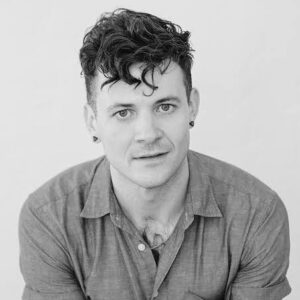
RICHARD VALITUTTO
Described as “a keyboard superstar” (The New Yorker), and a “spellbinding,” “vigorously virtuosic,” “all around go-to new music specialist” (LA Times), richard valitutto is a GRAMMY-nominated piano soloist, chamber musician, and vocal accompanist. They have collaborated and performed with the Martha Graham Dance Company, Tiny Desk Concerts, PBS Great Performances, Kammerensemble Neue Musik Berlin, and the American Academy in Rome, among many others.
valitutto is a founding member of the ensemble Wild Up, most notably as “pianist, and resident [Julius] Eastman scholar” (Vogue), contributing their piano artistry, incisive writing, and tenacious research efforts to the ensemble’s ongoing Julius Eastman Anthology, dedicated to the late composer’s music. Released annually on New Amsterdam to wide-spread acclaim, both Volumes 2 and 3 were Grammy-nominated for Best Classical Compendium. Volume 4 will come out this June, featuring valitutto’s deeply personal, virtuosic rendition of Eastman’s only surviving piano composition, Piano 2.
valitutto is currently ABD in Cornell University’s Keyboard Studies DMA program with a dissertation project on Julius Eastman, his life and music. They hold additional degrees from the California Institute of the Arts (MFA) and the University of Cincinnati’s College-Conservatory of Music (BM, summa cum laude).
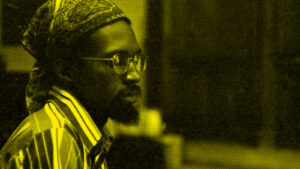
JULIUS EASTMAN
Julius Eastman (1940-1990) was a composer, conductor, singer, pianist, and choreographer. A singular figure in New York City’s downtown scene of the 1970s and 80s, he also performed at Lincoln Center with Pierre Boulez and the New York Philharmonic, and recorded music by Arthur Russell, Morton Feldman, Peter Maxwell Davies, and Meredith Monk. “What I am trying to achieve is to be what I am to the fullest,” he said in 1976. “Black to the fullest, a musician to the fullest, a homosexual to the fullest.”
Despite his prominence in the artistic and musical community in New York, Eastman died in obscurity in a Buffalo, NY hospital. His death went unreported for eight months, until an obituary by Kyle Gann appeared in the Village Voice. Eastman left behind few scores and recordings, and his music lay dormant for decades until a three-CD set of his compositions titled Unjust Malaise was issued in 2005 by New World Records. In the years since, there has been a steady increase in attention paid to his music and life, punctuated by newly found recordings and manuscripts, worldwide performances and new arrangements of his surviving works, and newfound interest from choreographers, scholars, educators, and journalists. ‘The brazen and brilliant music of Julius Eastman…commands attention: wild, grand, delirious, demonic, an uncontainable personality surging into sound’, writes Alex Ross for The New Yorker.
CHRISTOPHER BOTTA
Chris Botta is a producer, mixing, mastering in Bushwick Brooklyn. He works between electronic and acoustic mediums, pop and experimental with a focus on social justice. Collaborators include Found Sound Nation, David Lang, JACK Quartet, Attacca String Quartet, Carline Shaw, TAK Ensemble, Seth Parker Woods, Yaeji, Arushi Jain, Tia Corine, Balming Tiger, Emily Wells, and others.
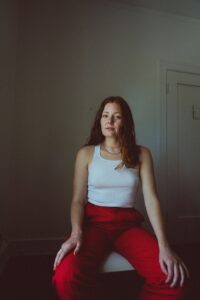
CATHERINE BROOKMAN
Catherine Brookman is a Brooklyn-based performer and composer. She will release her debut album “If A Song Fades Out, It’s Playing Forever Somewhere” this year. Her music has been described by The New York Times as “vocally complex, rich and consistently surprising…[with a] sonic glow as entrancing as a phosphorescent sea.”” By mixing vocals with electronics, synthesizers, and poetry, her music seeks to uncover the majestic inside of the mundane. Originally from Baltimore, the classically-trained Brookman uses her voice as the primary instrument to create wordless vocal loops / samples to build dreamlike textures and soundscapes. Her music combines storytelling techniques found in folk music with ambient landscapes to create a sonic cocoon, a soft landing space for heartbreak.
Along with making her own work, Brookman is an active performer in contemporary opera and theater at some of the top venues worldwide. She is a regular guest vocalist at the LA Philharmonic, performing works by Meredith Monk, Julius Eastman, and in the 6-hour opera Stranger Love. She has sung alongside artists such as Lorde, Esperanza Spalding, Louis Cole and in the 2020 Vanguard Gala honoring Laurie Anderson. She has performed as a soloist with acclaimed ensembles such as Alarm Will Sound, the Orchestra of St Luke’s and Wild Up, contributing vocals to their GRAMMY-nominated records: Julius Eastman, Vol 2 & 3. Brookman performed on Broadway in Hair, and off-Broadway in Dave Malloy’s Natasha, Pierre & the Great Comet of 1812. She is part of the maximal interdisciplinary ensemble CHILD, which created the “hypnotic dance-theatre acid trip” 1-800-3592-113592, which was named The New Yorker’s Best Theatre of 2024 by Helen Shaw. She created the original music for the podcast Very Unbecoming featuring Amy Sedaris on Audible. In 2024, her debut album was presented live with a chamber ensemble at the Carnegie Hill Concert Series in NY. Her work has been featured at Lincoln Center, Pioneer Works, The DiMenna Center, The Public, The Broad, MOCA Geffen, Ars Nova, and more. She recently completed work on Pauline Oliveros/Moira Roth’s The Library of Maps with Long Beach Opera, which she co-composed & performed with Paul Pinto & M.A. Tiesenga. This year, she curated her first show with the Orchestra of St Luke’s Visionary Sounds series, premiering an arrangement of her piece “”The Narrows, The Falls”” by Timo Andres along with works by John Zorn & Courtney Bryan. Upcoming, she is developing a new opera adaptation of Ursula K Leguin’s “The Dispossessed” by Ted Hearne / Chana Porter with Wild Up. She is a 2022 MacDowell Fellow.
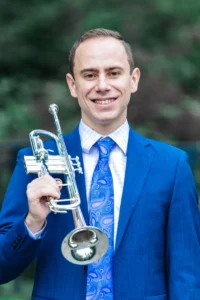
ROBERT GARRISON
Originally from Birmingham, Alabama, Robert Garrison is a dynamic trumpet player based in New York City, known for his versatility across classical, baroque, and jazz styles. Passionate about inspiring the next generation, he aims to make music accessible and enjoyable for all audiences through expressive playing and thoughtful sound.
Robert has performed with many of the country’s top orchestras. He served as Acting 2nd Trumpet with the Louisiana Philharmonic and currently performs as an Extra Musician with the Metropolitan Opera. His appearances include guest principal roles with the Iceland Symphony Orchestra, New York City Ballet, Sarasota Orchestra, and Rochester Philharmonic Orchestra, as well as performances with the Philadelphia Orchestra, Atlanta Symphony, The Florida Orchestra, and many more. Notably, he performed with the New York Philharmonic at the opening of David Geffen Hall in 2022 and with MusicAeterna on their 2019 U.S. tour—both named among the New York Times’s “Best Classical Music Performances” of their respective years.
An advocate for new music, Robert has premiered and recorded works by emerging composers, including Radiate by Katie Jenkins, winner of the 2021 Women Composing for Trumpet competition, and Shelbie Rassler’s …and soon you will be on its shore… in 2024.
Robert holds a B.M. from the University of North Texas and an M.M. from the Juilliard School, where he studied under Christopher Martin, Raymond Mase, Caleb Hudson, and others. He has attended prestigious festivals including Tanglewood, Aspen, and the National Orchestral Institute.
He is a Yamaha and Patrick Mouthpieces Performing Artist.
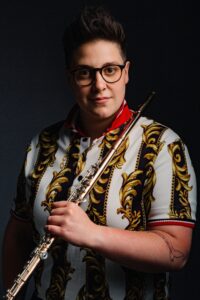
ISABEL LEPANTO GLEICHER
Isabel Lepanto Gleicher is a flutist, improviser, composer, visual artist, and educator. The New York Times has called her “excellent”, and a “rising talent and stand out performer” by Miller Theatre, where she was a featured Pop-Up Concerts soloist. John Zorn writes “Isabel’s display of virtuosity and her beautiful attitude and stunning musicality inspired me”. Izzy is an artist member of the International Contemporary Ensemble, Wild Up, new music sinfonietta Ensemble Echappe, the Annapolis Chamber Music Festival, and hip-hop band ShoutHouse. Isabel is a founding member of Song Sessions Collective, which consists of four improvisers using acoustic and electronic instruments, as well as an LED light installation to perform an ever-changing work based on the structure of whales songs. Through composed, stream of consciousness structured improvisations with the use of graphic and text notation make up the elements of Isabel’s original work. This work exists in the intersection of her musical and visual artistic practices. Isabel has curated solo sets of original music for the Shenandoah Valley Bach Festival, Experimental Sound Studio, ChamberQUEERantine Virtual Festival, and George Mason University’s Mason Arts at Home, as well as contributing to Metropolis ensemble’s live-streaming perpetual sonic installation Flame Keepers.
Isabel regularly performs with San Francisco based conductorless orchestra One Found Sound, as well as New York City based Talea Ensemble, Argento New Music Ensemble, and Contemporaneous. She also performs at festivals such as Mostly Mozart, Big Ears, Opera Omaha’s One Festival, TIME:SPANS Festival, SONIC MATTER, Sacrum Profanum Festival, MATA, and Prototype Festival. Isabel has appeared on the Guggenheim Museum Works and Process Series, Music of the Americas Society Composer Portrait Series, Park Avenue Armory Martin Creed The Back Door exhibit, the Clark Institute of Art Celebration of Helen Frankenthaler and the American Academy of Arts and Letters annual event An Afternoon of Music and Art. You can hear Isabel featured on several recordings ranging a variety of genres: Wild Up’s latest Grammy nominated album Julius Eastman Vol. 2: Joy Boy, and Julius Eastman Vol. 1: Femenine. As well as composer Anna Thorvaldsdottir’s Aequa, Ilaria Kaila and Aizuri String Quartet album The Bells Bow Down, synth driven post-rock band Infinity Shred’s Shred Offline, and Indie rock band San Fermin’s The Cormorant and Jackrabbit. Isabel is the flute faculty at SUNY Purchase Conservatory of Music, her alma mater where she received a BM in Flute Performance. She has also earned an MM in Contemporary Performance from the Manhattan School of Music, and an MM from the Yale School of Music.
In the summer of 2023 Isabel (Izzy) competed on season 25 of the CBS reality TV show Big Brother. She was evicted in an 8-1 vote on day 44 wearing a pig costume. To check out more about all of Izzy’s body of work, check out her website: www.izzymakesart.com
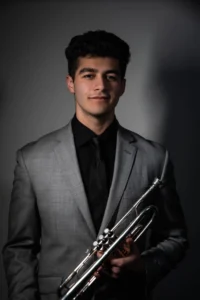
JATIN HIMATSINGHANI
Jatin Himatsinghani is a versatile trumpeter whose work spans classical, contemporary, and jazz genres. A recent 2025 graduate of The Juilliard School, he studied under acclaimed trumpeters Christopher Martin, Principal trumpet of the New York Philharmonic, and Raymond Mase, former Principal trumpet of the New York City Ballet and former member of the American Brass Quintet.
While at Juilliard, Jatin engaged in a wide range of performances and collaborations, including premieres of contemporary works and cross-genre projects with fellow artists. His artistry reflects a deep respect for tradition paired with a drive to expand musical boundaries.
Jatin also began studying composition, expanding his artistic voice through original works that reflect his wide-ranging musical interests. He plans to continue developing this path alongside his performance career.
Now based in New York City, Jatin Himatsinghani continues to build a multifaceted career as a performer, collaborator, composer, and advocate for meaningful musical experiences.
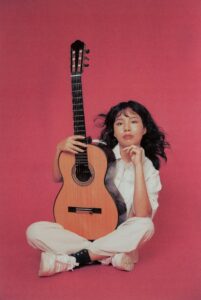
JIJI
Praised by The Washington Post for her “mesmerizing” and “stirring” performances, JIJI is an adventurous guitarist known for her virtuosity and command of diverse repertoire. Equally at home with both acoustic and electric guitar, her concert programs range from traditional and contemporary classical to free improvisation.
Through her compelling musicianship and stage presence, JIJI has solidified her reputation as a top 21st century guitarist. In recent seasons, JIJI has presented solo recitals at Carnegie Hall; Lincoln Center; 92nd Street Y; and the National Art Gallery, among other distinguished venues. In 2016, she became the first guitarist in 30 years to secure first prize in the Concert Artists Guild Competition.
JIJI’s 2024-2025 season demonstrates her range and versatility on her chosen instrument. She performs with the Hawaii Symphony Orchestra, the Marquette Symphony Orchestra, and Lincoln’s Symphony Orchestra. Other season highlights include her debut with the Seattle Symphony, a performance at the Isabella Stewart Gardner, and an appearance with the Bach Festival Society of Winter Park, FL.
JIJI has also gained a reputation as a sought-after concerto soloist. Equally fluent in classical and contemporary genres, her premieres of new guitar concertos continue to break new ground. Over the last five years alone, JIJI has premiered major concertos by composers Steven Mackey, Natalie Dietterich, Hilary Purrington, and Krists Auznieks.
A committed educator, JIJI is Associate Professor of Music in Guitar at Indiana University Jacobs School of Music. She has presented master classes and workshops extensively, including at the Peabody Institute, Yale University, and Dublin’s National Concert Hall, among many others.
In addition to advocating for the music of her contemporaries, JIJI also performs and records many of her own works, and she continues to develop her distinctive compositional voice. During her spare time, JIJI enjoys cooking and creating weird sounds on Ableton.
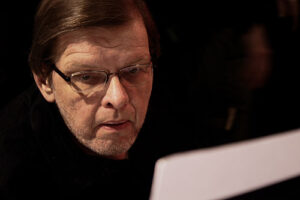
JOSEPH KUBERA
Pianist Joseph Kubera’s affiliation with Julius Eastman goes back to the early 1970s in Buffalo, NY, and continued after 1980 in New York City, where he performed with Eastman in his multiple-piano works and in other concert presentations. He made the first recording of Eastman’s Piano 2, and he has directed performances of Eastman’s works in New York, Los Angeles, Philadelphia, and in Belgium and England.
Praised in The Wire (UK) for his “instrumental athleticism, technical precision and conceptual lucidity,” and his “capacity to stretch limits and redefine horizons,” Kubera has been a leading new-music pianist for the past four decades. Recently he played at De Singel in Antwerp, at the “Christian Wolff at 90” celebration in New York, and recorded piano music by Daniel Goode, Lejaren Hiller and Laurie Spiegel. He has been a soloist at major European festivals and has worked closely with such luminaries as Morton Feldman, Robert Ashley, and La Monte Young. Composers who have written works for him include Larry Austin, Michael Byron, Anthony Coleman, Alvin Lucier, Roscoe Mitchell, and “Blue” Gene Tyranny.
A longtime Cage advocate, Kubera has made definitive recordings of Music of Changes and the Concert for Piano, and toured widely with the Merce Cunningham Dance Company at Cage’s invitation. He has worked with S.E.M. Ensemble, Steve Reich and Musicians, and myriad other ensembles in New York City. He has collaborated with pianists Marilyn Nonken, Adam Tendler and Sarah Cahill, and baritone Thomas Buckner. Kubera has been awarded grants through the NEA and the Foundation for Contemporary Arts. He has recorded for Wergo, New Albion, New World, Lovely Music, Tzadik, and many other labels.

BRIAN OLSON
An active freelancer in the New York area, Brian Olson has performed with such groups as Carnegie Hall’s Ensemble Connect, Mozart Orchestra of New York, New York Chamber Soloists, and Symphony in C. Brian recently finished a two-year fellowship with Carnegie Hall’s Ensemble Connect where he regularly performed at Carnegie Hall in collaboration with notable artists including Sir Simon Rattle, Mark Padmore, Andy Akiho, and Gabriel Kahane. Previously, he completed his master’s degree in trumpet performance at The Juilliard School as a student of Raymond Mase. He received his bachelor’s degree from the New England Conservatory, where he studied with Steven Emery. Olson has participated in numerous festivals, including three summers at The Aspen Music Festival, where he was an Aspen Conducting Academy Fellow, a New Horizons Fellow, and a Brass Quintet Seminar Fellow; New York String Orchestra Seminar; Hot Springs Music Festival; and Sewanee Summer Music Festival. He has most recently performed with The Manchester Music Festival and Geneva Light Opera. Olson is actively involved with community outreach in New York City as both a performer and teacher.
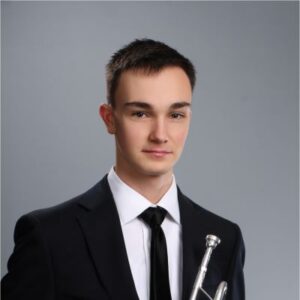
AIDAN PETERSON
Aidan Peterson is a 19-year-old classical and jazz trumpeter from Ardmore, PA. He began his trumpet studies at age five and also plays the cello. In the eighth grade, he was accepted into Juilliard’s Pre-College Division as a classical trumpet student and studied with Kevin Cobb and David Krauss. He’s currently a Juilliard School classical trumpet major studying under Raymond Mase and expects to graduate in 2028.
In April 2024, he made his debut with the New York Philharmonic in a side-by-side concert with the Juilliard Pre-College Orchestra. In August 2024 he made his Carnegie Hall debut as part of the National Youth Orchestra of the United States of America. In November 2024, he made his Kennedy Center debut as part of the “Sounds of Us” festival where he performed twelve new works written for brass alongside musicians of the MET Opera Orchestra.
Peterson is most recognized for how he uses his musical gifts to serve the veteran community. Since 2015 he has been a member of Bugles Across America as well as Youth Trumpet and Taps Corps, where he volunteers to sound live Taps at military funerals and events. To date, he has completed over 600 military assignments and has received dozens of awards, including nine President’s Volunteer Service Awards.
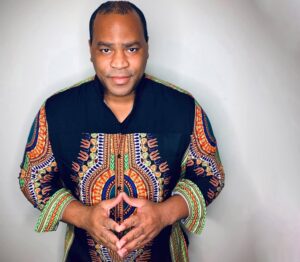
SIDNEY HOPSON
Performer, composer, production manager, educator, writer, labor activist, and cultural policy consultant – Sidney Hopson is a consummate arts professional. A member of the Grammy-nominated ensemble WildUp, Sidney has performed as percussionist, timpanist, drummer, and hand percussionist for the Los Angeles Philharmonic, Indianapolis Symphony, Los Angeles Chamber Orchestra, Muse/ique, Color of Noize Orchestra, Los Angeles Master Chorale, Los Angeles Opera, Pasadena Symphony & POPS, New West Symphony, Long Beach Symphony, ReCollective Orchestra, and Southeast Symphony. He has performed at the Academy Awards, NPR’s Tiny Desk, the Coachella Festival, Sick New World Festival, the American Music Awards, La Jolla Music Society SummerFest, Spoleto Festival USA, Ojai Music Festival, Lincoln Center Festival, Hear Now Music Festival, and the Kennedy Center’s RiverRun Festival.
He has performed and recorded alongside a vast range of artists, including: John Adams, Adam Blackstone, Adele, Anderson.Paak, Andy Akiho, Billie Eilish, Burt Bacharach, Claire Chase, James Conlon, Keith David, Dr. Dre, Alan Gilbert, John Debney, Lamont Dozier, Earth Wind & Fire, Danny Elfman, Peter Eötvös, Rhiannon Giddens, Robert Glasper, Philip Glass, Derrick Hodge, Justin Hurwitz, Dev Hynes, Chaka Khan, Alicia Keys, the Kronos Quartet, Seth MacFarlane, Ricky Martin, Rickey Minor, the New York Philharmonic, T-Pain, Dirty Projectors, Ellen Reid, Rihanna, Mr. Craig Robinson, The Roots, Kaija Saariaho, Esa-Pekka Salonen, Jordin Sparks, Joseph Trapanese, Dionne Warwick, Eric Whitacre, John Williams, Harry Gregson-Williams, Stevie Wonder, and more.
He has performed on-camera and on the soundtracks of over 100 films and TV shows, including: Superman (2025), Elio, Murderbot, Disney’s The Lion King 30th Anniversary: A Live-to-Picture Concert (Disney+), Beverly Hills Cop 4: Axel F, Murderbot, Beetlejuice Beetlejuice, Transformers: Rise of the Beasts, Story Ave, Avatar: The Way of Water, Nope, Encanto, The Orville, Coming 2 America, Pride (Hulu), Dolemite Is My Name, Men In Black: International, The Grinch (2018), Goosebumps, Big Eyes, Kedi, and GLEE.
Sidney produces arts programs, strategic plans, policy, and legislation for cultural organizations, government agencies, and NGOs in the United States and abroad. His work focuses on the intersections of the arts and human rights, social and economic justice, education, labor rights, mental health, crime prevention, counterterrorism, international development, refugee aid, geopolitics, and climate change. He has presented arts research and strategies at the United Nations General Assembly and the NATO Summit. Currently, he is developing a record label in Jordan to support refugee-artists across the Middle East.
He serves on the boards of directors of Wild Up and the Recording Musicians Association of Los Angeles (RMALA). He recently served on the American Federation of Musicians of the United States & Canada (AFM) Artificial Intelligence Subcommittee for motion picture & film contract negotiations with the Alliance for Motion Picture & Television Producers (AMPTP). He is an AFM delegate to the Los Angeles County Federation of Labor (LA FED) and an alum of the LA FED’s Black Organizing Institute. He has presented guest lectures and masterclasses at The Juilliard School, USC, Butler University, UCLA, CalArts, Orange County High School of the Arts, the Harvard-Westlake School, and the Music Academy of the West.
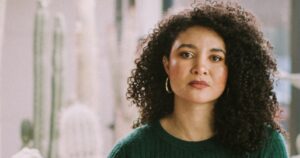
SHELLEY WASHINGTON
Composer and saxophonist Shelley Washington (1991) has emerged as an important and powerful voice of her generation. She writes music that draws from every sound she’s ever heard, tacking together snippets of jazz, rock, American folk, etc. sewed together with heavy grooves and big harmonies that “expertly mine the deep wells of private emotion,” (Opera News). The music she makes seeks to tell stories, with and without words, and comments on current and past social narratives she has seen or experienced.
Shelley has been commissioned by ensembles such as the Boston Lyric Opera, the Chicago Symphony Orchestra, Long Beach Opera Company, and Carnegie Hall’s Ensemble Connect. Recently, her chamber orchestra piece, Both, has been performed by the Los Angeles Chamber Orchestra and the Kansas City Symphony. Her arrangement of Julius Eastman’s Joy Boy was recorded by Los Angeles-based ensemble, Wild Up, on their Grammy-nominated album “Eastman Vol. 2: Joy Boy” and her string quartet, MIDDLEGROUND, was featured on PUBLIQuartet’s Grammy-nominated album, “Freedom and Faith”. Currently Artist-in-Residence with the Long Beach Opera Company, she is working on her first full opera, The Passion of the Nell, with librettist and acclaimed novelist, Lisa Teasley.
Shelley is a Ph.D. candidate in Music at Princeton University and teaches composition at New York University Steinhardt. She is an active performer and collaborator who has performed and recorded with Justin Vernon of Bon Iver, Pieta Brown, the 37d03d Collective, appeared on NPR’s Dolly Parton’s America podcast, and in Netflix and Vox Media’s series, Explained. As a member of the Los Angeles-based chamber orchestra Wild Up, she has been able to contribute to their ongoing Julius Eastman anthology series, and recently provided vocals for Eastman’s Stay On It for their NPR Tiny Desk concert. Alongside vocals and saxophone, Shelley plays guitar in her Brooklyn-based post-rock band, Good Looking Friends. When she isn’t making noise, she can be found walking her dog Rodeo near her home in Brooklyn, NY.
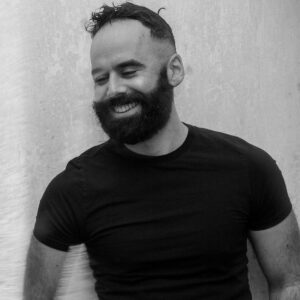
ADAM TENDLER
Adam Tendler has been called a “daring pianist” with “adventurousness and muscular skill” (The New York Times), “the hottest pianist on the American contemporary classical scene” (Minneapolis Star Tribune), “relentlessly adventurous” (Washington Post), a “remarkable and insightful musician” (LA Times), an “intrepid… maverick pianist” (The New Yorker). and “one of contemporary classical music’s most intentional and daring pianists” (Seven Days). At age 23, Tendler performed solo recitals in all fifty states, going on to receive Lincoln Center’s Emerging Artist Award, the Yvar Mikhashoff Prize, and appearing as soloist with the London Symphony Orchestra, LA Phil, Sydney Symphony, Toronto Symphony Orchestra, NJ Symphony, Vermont Symphony Orchestra, and on the main-stages of Carnegie Hall, the Barbican Centre, Sydney Opera House, BAM, Walt Disney Concert Hall, and other leading series and stages worldwide. His appearance on Wild Up’s Julius Eastman anthology earned a GRAMMY® nomination, and his recent project, Inheritances, was a New York Times Critic Pick, who wrote of the album, “You will be moved, profoundly and intensely.” Tendler’s 2024 immersive installation, Exit Strategy, as Green-wood Cemetery’s artist in residence, received national attention and engaged hundreds of contributing community members. He is the author of two books, a Yamaha Artist, and serves on the piano faculty at NYU.
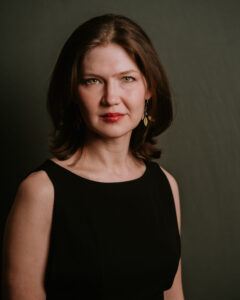
REBECCA STEINBERG
Trumpet player Rebecca Steinberg can frequently be found in the pit of New York City’s many theater productions, performing alongside her brass quintet Calliope Brass, and teaching music both privately and in the classroom. Rebecca has held trumpet chairs in Tony winning Broadway musicals SUFFS and New York, New York. Other favorite musical appearances include Ragtime (City Center), Sound of Music (Papermill Playhouse), and Fiddler on the Roof in Yiddish (Stage 42). Rebecca’s most passionate and impactful work is with Calliope Brass, an ensemble and nonprofit that prioritizes creativity, collaboration, and community. Rebecca won the 2018 Liz Swados Inspiration Grant, an annual award honoring influential female music educators in New York City, on behalf of Calliope Brass. Rebecca enjoys a variety of freelance work with other ensembles including Contemporaneous, TILT Brass, Metropolis Ensemble, and Talea Ensemble to name a few. In 2023, she performed the world premiere of Adolphus Hailstork’s “Concertino for Trumpet and Orchestra” with The Chelsea Symphony. Additionally, Rebecca serves as a program head for Maestra Music’s First Takes program and is Director of Brass at the Dwight-Englewood School.
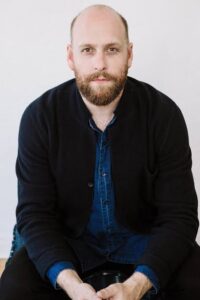
CHRISTOPHER ROUNTREE
We see Lady Macbeth in a dozen crooning silhouettes washing blood out of rags over bright porcelain sinks; hear Stravinsky pouring out of an abandoned warehouse; see dozens of watermelons fly off Disney Hall; hear a black and white overture imploring against hatred; parse a chorus singing Haydn’s Creation backwards; watch a violinist cutting himself out of duct tape with a razor as his amplified violin sits gathering feedback; listen to three minutes of Le nozze di Figaro on repeat for twelve hours; celebrate with rituals joyous for the end of the world; witness a long-lost John Adams suite come alive; and hear the sound of rose-petal jam-making as music. Conductor and composer Christopher Rountree stands at the intersection of classical music, new music, performance art and pop.
Rountree was named Music Director of Long Beach Opera following his debut with the company in the 2020-21 season conducting Philip Glass’ Les Enfants Terribles.
He maintains a long-term relationship with Martha Graham Dance Company resurrecting, recording and performing works by Copland, Kodaly, Rountree (MGDC commission), and others, with his ensemble Wild Up. In 2019, Rountree began recording a four-volume set of the music of Julius Eastman. In conjunction with this recording project, he toured the country with Wild Up, culminating in an Eastman portrait at the National Gallery in Washington, D.C. Rountree is currently working on two operas about love and technology with librettists Royce Vavrek and Roxie Perkins.
Rountree’s inimitable style has led to collaborations with: Björk, John Adams, Yoko Ono, David Lang, Scott Walker, La Monte Young, Esa-Pekka Salonen, Mica Levi, Alison Knowles, Yuval Sharon, Sigourney Weaver, Tyshawn Sorey, Ragnar Kjartansson, Ashley Fure, Julia Holter, Claire Chase, Missy Mazzoli, Ryoji Ikeda, Du Yun, Thaddeus Strassberger, Ellen Reid, Ted Hearne, James Darrah, and many of the planet’s greatest orchestras and ensembles including the San Francisco, Chicago, National, Houston, and Cincinnati Symphonies; the Los Angeles Philharmonic; International Contemporary Ensemble; Roomful of Teeth; Opéra national de Paris; and the Los Angeles, Washington National, and Atlanta Operas. He has presented compositions and concerts at Walt Disney Concert Hall, Palais Garnier, Mile High Stadium, the Coliseum, Kennedy Center, Philadelphia Museum of Art, ACE Hotel, National Sawdust, MCA Denver, The Hammer, The Getty, a basketball court in Santa Cruz, and at Lincoln Center on the New York Philharmonic’s Biennale.
Rountree is the artistic director and conductor of Wild Up, the ensemble he founded in 2010, and artistic director of an interdisciplinary ambient series in an oak grove in LA called SILENCE. Rountree is a seventh-generation Californian descended from the first sheriffs of Santa Cruz County, he lives in the Silver Lake neighborhood of Los Angeles.

ERIN ROGERS
Based in New York City, Erin Rogers is a saxophonist, composer, and improviser dedicated to new and experimental music. Her music has been described as “radical and refreshing” (Vital Weekly), “crucial and fast-acting” (NY Times), and “a richly expressive display of stentorian brilliance” (The Wire). Her work ranges from chamber music to solo and collaborative composition, improvisation, live electronics and theatre. Rogers’ music has been performed at Lincoln Center, Carnegie Hall, Elbphilharmonie (Hamburg), Roulette, Centro Nacional de las Artes (Mexico City), Celebrity Series (Boston), MATA Festival, Ecstatic Festival at Merkin Hall, Prototype Festival, Winspear Centre (Edmonton), Resonanzraum (Germany), Círculo de Bellas Artes (Madrid), and NyMusikk Bergen (Norway). Rogers is co-artistic director of NYC-based performance ensembles: thingNY, New Thread Quartet, Hypercube, Popebama, and core member of the International Contemporary Ensemble and LA-based WildUp. “A consummate collaborator” (The New Yorker), Rogers crosses genres from music-theatre-to-dance-to-installation-to-silence in her work with Abilities Dance, Orange Theatre, L Collective, Harvestworks, Experiments-in-Opera, Decoder, and Music for Contemplation. She has received commissions and honors from The Barlow Endowment, Library of Congress, Robert Bielecki Foundation, Copland House, ASCAP, and the Jerome Foundation. Rogers can be heard on New Focus Recordings, New World Records, Tonus Vivus, Edition Wandelweiser, Relative Pitch, Innova, Neuma, Infrequent Seams, New Amsterdam, and Gold Bolus labels. Her solo album “2000 Miles” was listed in Best Experimental Music on Bandcamp. Rogers is a D’Addario Woodwinds and Conn-Selmer artist, a Chamber Music Society of Lincoln Center Teaching Artist, Co-Chair of the Manhattan School of Music Contemporary Performance Program with Matt Ward, and Co-Artistic Advisor of the Tactus Ensemble.
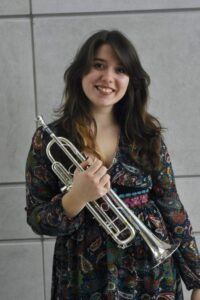
MEGAN RADCLIFFE
Megan Radcliffe is currently pursuing her Master of Music in Trumpet at The Juilliard School under Chris Martin, principal trumpet of the New York Philharmonic. As an undergraduate, she attended Northwestern University, where she received a Bachelor of Music in Trumpet Performance and a Bachelor of Arts in Statistics. While at Northwestern, she studied with David Bilger (The Philadelphia Orchestra), Thomas Rolfs (Boston Symphony Orchestra), Michael Sachs (The Cleveland Orchestra), and Channing Philbrick (Lyric Opera). Megan has performed with the New World Symphony, led the Juilliard Orchestra as principal trumpet, served as a substitute musician with members of the New York Philharmonic Brass and Percussion, and is an associate member of the Civic Orchestra of Chicago. In previous summers, she has attended National Repertory Orchestra, Round Top Music Festival and Miami Music Festival.
Curator’s Note
My first encounter with Julius Eastman and his art came in the form of an MP3 recording live from The Kitchen in the ’80s. For others who knew or worked with him in person, it may have come in the form of coy glances, a smile, a rupturing laugh of the corpus, or maybe even a performance in cold Buffalo, NY where he spent so many of his formative years, or in downtown New York City where he moved fluidly between music communities as a composer, vocalist, pianist, even dancer. But for me, it was that bootleg MP3, and I still remember the impact his work, and this experience, left on me more than 10 years ago. And yet, it’s been more than 15 years since his renaissance and we’re still discovering fragments of this complex genius’s life and output.
When called to curate this weekend-long festival in the name of Eastman, I really had to reflect on what could be shared and presented that hadn’t already been done. To date, there have been at least two major composer portraits of his work in NYC, so what would really make this one different, and what has not been covered in the prior iterations? Julius Eastman: A Power Greater Than and The End Is Not In Sight offer another lens to look solely at this artist on full display through the sonorous performances of intergenerational champions of his work, and also actively positions his creations alongside the cultural shifts taking place on disco dance floors, in downtown lofts, and within the Black and queer liberation movements.
Pulling from more than a decade of work of performing and teaching about Eastman’s life and his creations as a performer and composer, I’ve done my best to twist, stretch, and carve out a new lens to experience and get to know the almighty Julius Eastman. My hope is that all who come to experience this music and these powerhouse artists leave with a newfound love, adoration, and respect for the genius he was and the music he left us with.
— Seth Parker Woods, June 2025
Translations
Translations by JULIA BULLOCK and MYRNA DIAZ.
With Spanish Language Biblical text from the Reina-Valera Bible. Special thanks to ELENA PULGAR LONZACO and JOSE MANUEL CRUZ VELAZQUEZ.
The libretto you hear presented on the stage is in bold, with its translation to the right (or below on mobile). Or read a PDF version here.
Reference Guide
A novelist, short-story writer, poet, essayist, and diplomat who was probably the most important Mexican woman writer of the 20th century. She was deeply compelled by the writings of Spanish 16th Century religious activist and author Saint Teresa of Avila and Sor Juana Ines de la Cruz. Learn more.
Written in 1950, this was an early collection of poems by Castellanos
A 2nd Century apocryphal text not appearing in the King James Bible or modern Reina Valera Bible, the Protevangelical Gospel of St. James tells the story of the birth, childhood, and early adolescence of Mary, mother of Jesus. The text featured in El Niño is drawn from Chapter 17. Read the full text here.
The primary English translation of the Old and New Testaments in current use. It was made in 1604—by a commission brought together by King James—in response to issues with earlier English language translations developed in the prior century.
Initially translated by former Catholic Monk Casiodoro de Reina in 1569 and revised by his student Cipriano de Valera in 1602, the Reina Valera Bible is the common Spanish-language translation of the bible used by Spanish-speaking protestants.
Living in Mexico in the 17th century, Sor Juana was a poet, dramatist, scholar, and nun, an outstanding writer of the Latin American colonial period and of the Hispanic Baroque. Learn more.
The Nicaraguan poet— who lived from 1867-1916 —is credited with initiating the Spanish-language literary movement of “modernismo” in the late 19th century. Learn more.
On October 2, 1968 in the Tlatelolco section of Mexico City, the Mexican Armed Forces opened fire on a group of unarmed civilians in the Plaza de las Tres Culturas who were protesting the upcoming 1968 Summer Olympics. 300 people —most of them students—were killed. Learn more.
Aztec goddess who represented sexual impurity and sinful behavior. Learn more.
The Gospel of Pseudo-Matthew (Ps. -Mt.) is one of the most important witnesses in the Latin West to apocryphal stories about the lives of Mary, Joseph, Jesus, and Mary’s parents, Anna and Joachim. Learn more.
A collection of Rosario Castellanos poems, El rescate del mundo (The Ransom of the World), was published in 1952; these are short, spare poems that provide rare descriptive tributes to indigenous women and their work. Learn More.
“…elevated an already-revisionist work into something much more powerful”
The New York Times
Upcoming tour performances:
December 21, 2023 at Cathedral of St. John the Divine, New York, NY. Learn More
